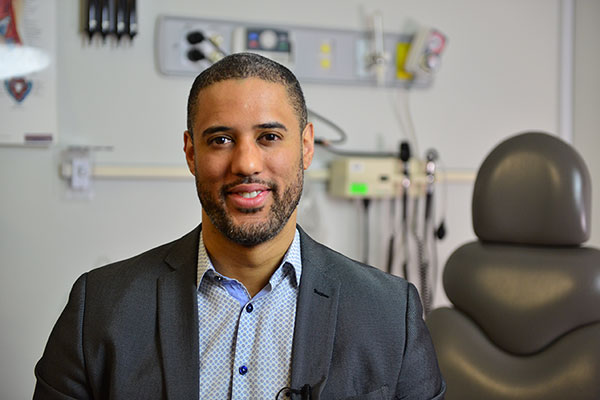In Canada, cases of throat cancer have more than doubled in the past two decades, despite a significant drop in smoking.
The culprit? The human papillomavirus (HPV).
“Worldwide, HPV-related head and neck cancers are considered a slow epidemic,” said Dr. Anthony Nichols, a head and neck surgeon and Associate Professor with the Department of Otolaryngology – Head and Neck Surgery.
Unlike throat cancers linked to heavy smoking and drinking, patients with HPV-related cancers are younger - many are in their 40s and 50s - and healthier. There is also a high survival rate (more than 80 per cent of patients will survive), meaning quality of life after treatment is a major focus for clinicians.
“These patients have a high survival rate, which leads us to ask questions about the ideal treatment, and how to reduce side effects going forward,” said Dr. David Palma, a radiation oncologist and Associate Professor with the Department of Oncology.
 In 2019, Drs. Nichols and Palma reported findings from the world’s first clinical trial comparing robotic surgery to radiation therapy for the treatment of oropharyngeal cancer, which affects the back of the throat, base of the tongue and tonsils. Published in The Lancet Oncology, the seven-year ORATOR trial looked specifically at quality of life one year after treatment, including swallowing function.
In 2019, Drs. Nichols and Palma reported findings from the world’s first clinical trial comparing robotic surgery to radiation therapy for the treatment of oropharyngeal cancer, which affects the back of the throat, base of the tongue and tonsils. Published in The Lancet Oncology, the seven-year ORATOR trial looked specifically at quality of life one year after treatment, including swallowing function.
The study was formally called “A Phase II Randomized Trial for Early-Stage Squamous Cell Carcinoma of the Oropharynx: Radiotherapy vs. Trans-Oral Robotic Surgery.”
Radiation, often paired with chemotherapy, is the standard treatment for throat cancer in Canada. But transoral robotic surgery has risen in popularity across North America as a minimally invasive alternative. “In the retrospective data, surgery looked extremely promising,” explained Dr. Nichols. “But we wanted to acquire high-level data and provide a good evidence base for treatment decisions.”
Sixty-eight participants across six Canadian centres were randomized to receive precision radiation with chemotherapy or robotic surgery.
Results showed no difference in survival rates between the two treatments, but swallowing scores were slightly better among the patients who received radiation. “It was a statistical difference, but it didn’t make the criteria for a clinically meaningful change,” said Dr. Nichols.
However, patients in the two groups also experienced different quality of life outcomes. With surgery, patients were at risk for dangerous bleeding and were more likely to experience pain and use pain medication one year after surgery. With radiation, patients experienced tinnitus (ringing in the ears) and hearing loss after receiving chemotherapy.
“The trial really provided the first evidence to compare apples to apples between these two treatment options,” said Dr. Nichols.
The clinician-researchers have launched a second clinical trial to further compare robotic surgery with radiation and chemotherapy. The ORATOR 2 trial will test two ways of de-escalating treatment - gentler doses of radiation and chemotherapy compared to surgery with no follow-up chemotherapy.
The team is aiming to recruit 145 patients for the international trial, with 30 per cent currently enrolled. Centres in Canada and Australia are already on board, and the researchers expect to have results within five years.
Their long-term goal is to determine the best treatment option for patients with oropharyngeal cancer.
“Being clinician-scientists gives us the opportunity to innovate and improve patient care,” said Dr. Nichols. “We want to do better. We want to answer the questions that are burning not just in our minds, but often in the minds of our medical colleagues to do better for our patients.”